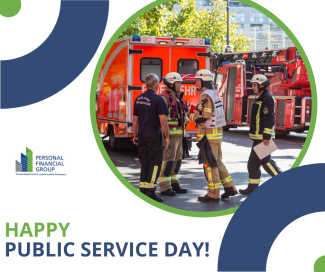
A Public Servant's Roadmap to a Confident Retirement
Public servants may face unusual challenges and opportunities when it comes to planning for retirement. On the one hand, public service positions usually pay less than the same types of work in the private sector, giving you less money to work with. On the other hand, these positions can come with generous pensions and other helpful benefits that may help shape your retirement. Here are some essential steps to help you draw up a road map for a planned retirement.
Understand Your Retirement Benefits
One of the first steps in retirement planning is to understand your available benefits. Public sector employees may have access to pensions, which might provide a reliable source of income during retirement. Once you're "vested" in a pension and pass your retirement eligibility age, you may receive a monthly check for the rest of your life.
Pension vesting schedules vary widely from employer to employer, so it's important to be familiar with your plan. For example, federal employees vest their pension after five years of service,1 while governmental employees who work for the state of Florida must serve for eight years to receive benefits.2
Pension plans are generally offered alongside other types of retirement accounts. Federal employees have access to the Thrift Savings Plan (TSP), which is like a 401(k) and offers several different investment fund choices.3 Some state and local governments offer similar plans. It is generally a wise strategy to take advantage of any employer-matching contributions. Ignoring this benefit is like giving away free (and tax-free) money.
Assess Your Financial Situation
Before creating a retirement plan, you need to assess your current situation. Calculate your net worth by adding assets like savings, investments, and home equity and subtracting your debts and other liabilities. Assess your monthly expenses and compare them to your projected retirement income to ensure your budget makes sense.
Create a Retirement Budget
Once you understand your financial situation, a retirement budget may help you manage your cash flow after you stop working. Be realistic about your spending habits and consider how your lifestyle may change in retirement. For example, you may spend less on clothing, dry cleaning, and lunches while spending more on travel, deferred home maintenance, and health insurance.
Invest for the Future
Pensions provide a steady source of income that isn't tied to market performance, but they may not be enough to cover your retirement expenses. It's usually a good idea to work with a financial professional to create an investment strategy that considers your available benefits and needs for your retirement.
Like any other journey worth taking, retirement planning requires careful preparation, discipline, and foresight. By doing the legwork now, you may build a solid foundation for approaching the goal of having a fulfilling and enjoyable retirement.
Important Disclosures:
The opinions voiced in this material are for general information only and are not intended to provide specific advice or recommendations for any individual. To determine which investment(s) may be appropriate for you, consult your financial professional prior to investing.
All information is believed to be from reliable sources; however, LPL Financial makes no representation as to its completeness or accuracy.
This article was prepared by WriterAccess.
LPL Tracking # 564647
Footnotes
1 Vesting in the Federal Retirement System
https://www.fedweek.com/experts-view/vesting-in-the-federal-retirement-system/
2 Pension Plan Service Retirement
https://frs.fl.gov/forms/EH_ch09.pdf
3 Plan for a Lifetime with TSP
https://www.tsp.gov/

